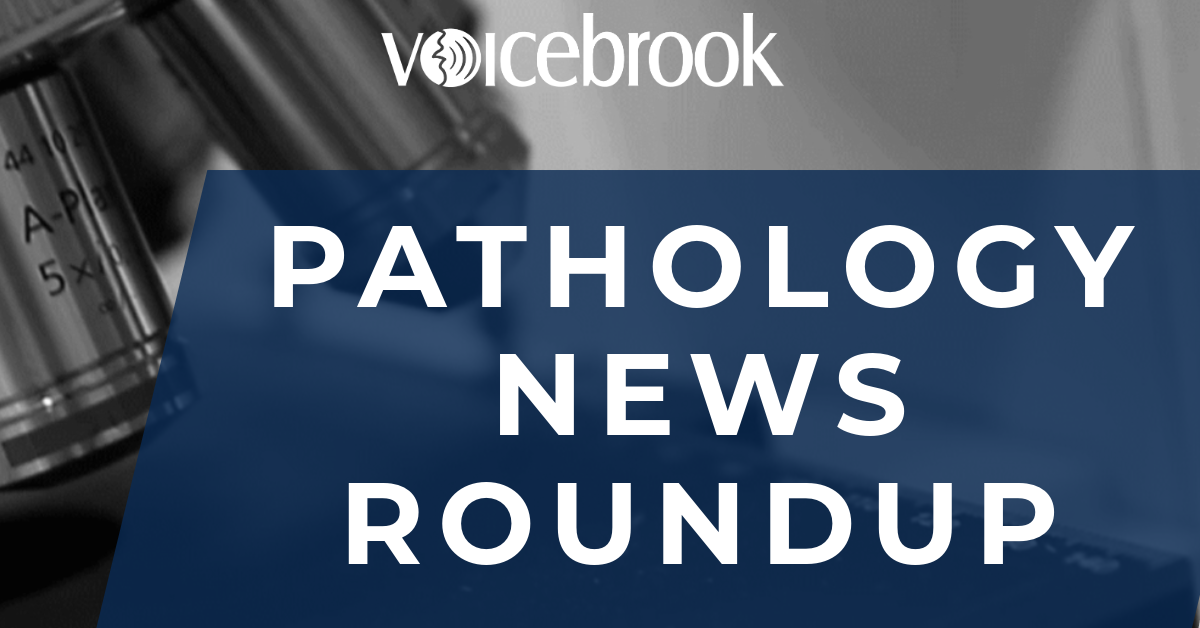Pathology News Roundup: January 18, 2024
Pathologists Quality Registry Update. The College of American Pathologists (CAP) Pathologists Quality Registry once again received approval and its...

It might sound odd for a company that specializes in speech recognition technology to say, “Talk is cheap,” but it’s true. I apparently have a thing for making surprising statements like this, because in 2016, I wrote a blog post claiming that speech recognition is not a cost-effective solution for pathology. In that post, I explained that speech technology alone was unlikely to deliver a return on investment versus traditional transcription. Why? Although speech recognition can be a useful part of a diagnostic reporting solution, implementation of these tools alone without a thoughtful complement of technologies and workflow enhancements was proven to slow down pathologists, thus negating the efficiencies that laboratories were seeking to attain.
That philosophy applies to anything in life. Without a thoughtful complement of actionable solutions to back it up, no idea can be implemented successfully. With the start of a new year, many people set goals and resolutions for themselves and their businesses. It can feel even more important to establish a path forward when entering a new decade, as we all are in 2020. We at Voicebrook are no different. At our recent annual meeting, we spent many hours determining how our team can continue to improve on our mission of helping patients get results.
Part of that dedication to our mission involves listening to our clients’ needs and concerns. Recently I was talking with a client about his perceived challenges of migrating from transcription to a solution that requires the pathologist to assume full responsibility for the creation of the diagnostic report. The pathologist was concerned, because the decision to move to the new reporting solution was made exclusively by his hospital’s IT department with limited pathologist input. In addition to now being tasked with authoring and formatting the report, losing his trusted transcriptionist meant losing an extra set of eyes that he counted on to review the accuracy of the report.

This pathologist went on to tell me that he was frustrated with the criteria that IT used to make this decision on his behalf. The hospital would judge the success of the project by his ability to produce the same amount of reports for less money, and it was his responsibility to make things work. After I assured him that Voicebrook would work with him to achieve that, we both agreed that this goal established by his hospital should be considered a very low bar. Simply maintaining the status quo for cheaper does not make something a good solution or the right solution, especially when we are dealing with people and lives.
A lot has changed for me both professionally and personally since I wrote that post in 2016 that I referenced earlier. Professionally, our company released a new reporting platform, VoiceOver PRO, which combined the most effective tools from our VoiceOver 5 product, and added the additional benefits associated with structured synoptic reporting. VoiceOver PRO’s release exceeded our expectations, with well over 100 laboratories acquiring our reporting solution in just over a year and a half.
The recent years also gave me a personal perspective that deeply affected my understanding of pathology. During this time period, I watched two important people in my life be diagnosed with cancer and undergo treatment. I experienced first-hand the anxiety of waiting a few extra days for results because a pathology report was held up. I came to understand the uncertainty of questioning whether a mere millimeter in measurement could mean the difference between one diagnosis and treatment versus another. I quickly learned the helpless feeling of making life-and-death decisions for people I love. I realized just how reliant we were on the accuracy and timeliness of medical reports and the team of doctors we trusted to help us through difficult choices. I learned that an initial diagnosis is not the only diagnosis; that in fact it was just the first of many reports that we would rely on to determine a course of treatment and make informed decisions.
I experienced first-hand the anxiety of waiting an extra few days because a pathology report was held up.
As one would expect, these experiences have further shaped my views on the importance of highly accurate diagnostic reports with a rapid turnaround time. They also further cemented my belief that while saving money is a valid goal when selecting a pathology reporting solution, that ultimately delivering fast, accurate, and easy-to-read results are more appropriate standards by which to judge a solution. I came away from these experiences believing there were things that can be done within the report creation process to improve the experience and outcomes for patients. Walking this harrowing road of cancer with my loved ones was not easy, and it taught me that we can do better for both pathologists and patients. I am thankful that I am in a position where I can help effect that change.
Over the next several weeks I will be writing a series of blog posts that talk through some of these ideas, while evaluating the role that speech recognition and other technologies should play in pathology reporting and helping patients get results. Voicebrook has great things in store for 2020, and I look forward to sharing some of these thoughts with you and hearing your feedback.



Pathologists Quality Registry Update. The College of American Pathologists (CAP) Pathologists Quality Registry once again received approval and its...

New CAP Cancer Protocols. New protocols for endocrine tumors and updated existing protocols for breast cancer diagnoses are now available from the...

Register for CAP24. It's hard to believe that the fall season is almost here... and that means CAP24 is just around the corner. Registration is now...